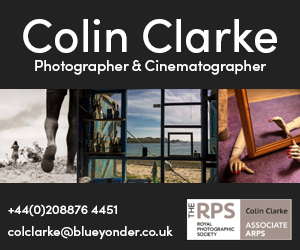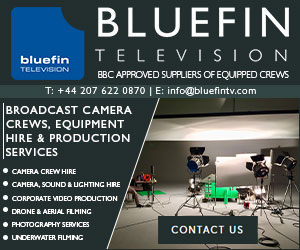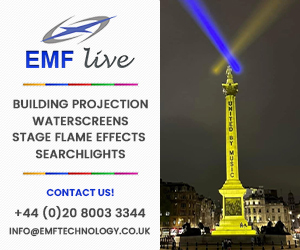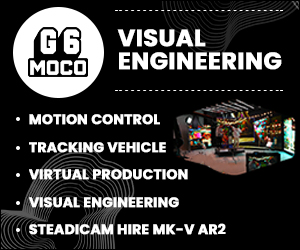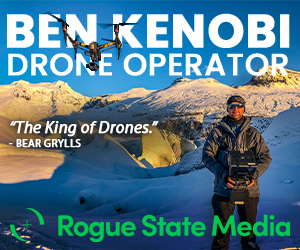Broadcast News
02/06/2016
Focus On The Future For Cameramen
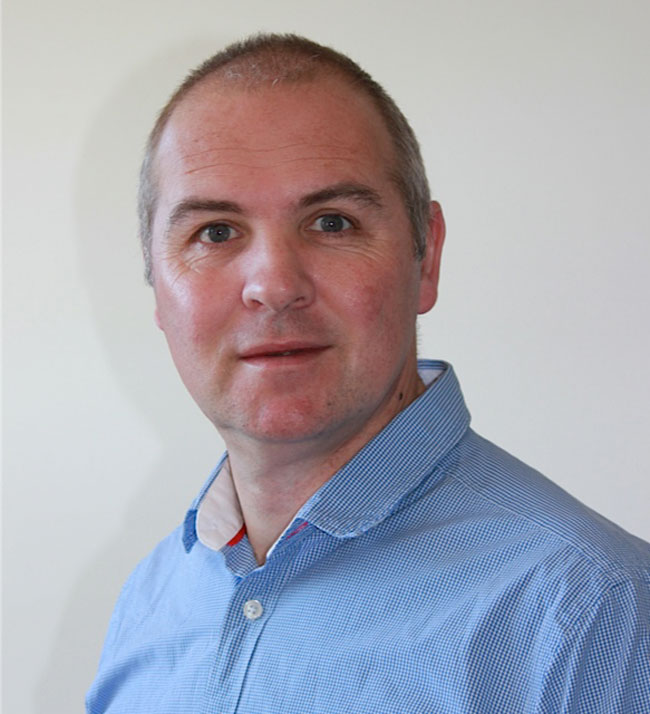
To get an idea of the future for cameramen & women you need to look to the past, writes Sean Russell, Freelance Lighting Cameraman. Art and artists have constantly been inventing and perfecting techniques and style. Mastery of the craft skill was a pre-requisite together with a keen eye and flair to compose an image that engages the audience and informs a scene's geography.
Technology can only get you so far in visual storytelling. Whatever your working genre; newsreel, factual, magazine, commercials or drama we all seek to create and colour a visual dialogue with the viewer. With so many camera systems available today we can easily be fooled that anyone can do it, we just need the right tools.
Craft skill is essential. It is the basis for experience to grow and allows good camera operators to navigate the multitude of shooting styles and deliver a directors vision. We are visual facilitators; this is also where camera operators can set them selves apart.
Kenneth Branagh's latest 'Wallander' series is back on our screens and Lukas Strebel DoP treats us to visual storytelling as High Art. This Nordic noir style is simple and precise, not just in its script and characters but the filming style. The slower pace and precise composition allows longer scenes to develop within the frame for a viewer to digest the whole story.
It is a filmmaker's ability to create a visual dialogue with the viewer that in turn draws out an emotional response, but to do the story telling, visuals need to be strong enough for the viewer to become engaged and ultimately immersed.
We as 21st century citizens see more images a day than a 17th century citizen would see in a lifetime. Our cultural embrace of image making is not just based in entertainment, or art furthering itself but a necessary component of how our lives in business, society and politics work.
Many cinematographers, DoP's and camera operators credit artists Caravaggio and Vermeer in influencing their own lighting and composition. Caravaggio, an effective master of light & darkness, often chose to paint characters in the half-light, their partial outline and presence was all the viewer needs to see to understand the emotion and nuance of the scene. Vermeer, with his abundantly soft northern light, often included a whited-out window acting as the scene's source light but also a metaphor for a world beyond the room.
So would these past masters have benefited from HDR or custom LUTs (Look Up Tables), or a cameras wider exposure latitude? A badly composed or lit scene will not necessarily improve or evoke more emotion with technical interference such as HDR or a custom LUT applied. However a well-composed and well-lit scene will stand on its own without technological enhancement. Combined with it the scene can be transformative and stronger. The crucial element is the starting point.
We are fortunate to work in an industry that sits at the intersection between art and engineering. We each have preferred leanings to one or the other, as camera operators we not only have to make technological choices of format, lens size, compression, data management, but cerebral artistic and emotion forming choices of; depth of field, composition, high or low key lighting ratios, colour.
This mastery of the craft skill combined with technical innovation brought us a visual feast such as Gavin Finney's photography in 'Wolf Hall'. Shot with an abundance of candle lit scenes, with a low light camera sensitivity that has almost extended beyond our own visual perception in the dark. The candle light illuminates the darkness but still enough darkness and space was retained to guide the viewer's eye to the part of an image we want them to see and evoke an aura. The same visual dialogue with the viewer that Caravaggio sought.
We are now entering a world similar to the master painters of the 16th & 17th Centuries. Their choices of painting size were not dictated by any limits on canvass size. They chose the canvass that best expressed the vision they wanted to convey to the viewer, and very probably as we too know today, the budget of the commissioner.
ARRI's Open Gate, RED's 6-8K sensors and the continuing open source project development of Axiom's various sensor formats are delivering the choices that Caravaggio and other past masters dealt with. Where quality of photosites, Bit depth and colour rendition are assured across the whole image, whatever the working aspect ratio size of the final release; some projects would benefit from work in a portrait-displayed constriction. Industry has developed the image sensors quality to the technical point of sufficient pixels, low noise and sensor data pushing that we are not constrained by suffering a resolution loss due to our aspect choice when displayed.
I am extremely excited with the new format choices that can yet come through, until now, format sizes have always been stuck in a technical battle. Imax, Cinerama 2.66:1 Academy, 2.40:1, 2.39:1, 2.0:1, Vittorio Storaro ASC Univisium 3 perf and VistaVision, 1.85:1, 16:9, 4:3 & many others all have valid legitimacy. Many of which are legacies of a film stock format. There was always a compromise to be made somewhere along the line of acquisition, processing & projection.
On a weekly studio show for RTV that I light & camera supervise, I am considering replacing some of the printed portrait orientated set flats with back projected moving images again in a portrait aspect. Preferably captured by a taller sensor and not by pillar-box cropping of a standard landscape sensor image or by rotating the camera 90 degrees and projecting also at 90 degrees. I could use a digital DSLR for its capture but the need for associate recordings such as audio and time code means I would prefer to remain in the realm of a cinematographic digital camera. A larger sensor helps but so does a squarer sensor. So RED, ARRI and Axiom have moved technology in a direction that I want to go. This movement will prove to be difficult for lens providers but they cracked it before with anamorphic squeeze so I am sure they will innovate again.
For my own preference, the 2:1 format is the most interesting aspect size. Again looking to the past at Leonardo Da Vinci's 'The Last Supper' painting, it is almost a 2:1 format size (4.6m x 8.8m) and has the broad feel and height to be suited for a multitude of projects.
But the canvass is growing even larger! The idea of shooting a virtual reality 360 degree scene probably means some part of me will be overwhelmed as to how to use such a canvass, but there again it excites me to wonder who is brave enough to embrace it and for which projects it works best and how we will view it?
I mentioned at the beginning of this article that we need to look to the past to get an idea of the future; I believe in doing so we have now surpassed Michelangelo's grand vision of painting the Vatican's 'Sistine Chapel' with a canvass size of 40m x 14m.
Our own future visions can only get bigger, but we need to crack the craft skills to display it at its best. For projects to succeed visually and to emotionally engage the audience you need to start with a strong visual canvas and then with the assistance of technology learn to guild a lily.
www.srcamera.com
(JP/LM)
Technology can only get you so far in visual storytelling. Whatever your working genre; newsreel, factual, magazine, commercials or drama we all seek to create and colour a visual dialogue with the viewer. With so many camera systems available today we can easily be fooled that anyone can do it, we just need the right tools.
Craft skill is essential. It is the basis for experience to grow and allows good camera operators to navigate the multitude of shooting styles and deliver a directors vision. We are visual facilitators; this is also where camera operators can set them selves apart.
Kenneth Branagh's latest 'Wallander' series is back on our screens and Lukas Strebel DoP treats us to visual storytelling as High Art. This Nordic noir style is simple and precise, not just in its script and characters but the filming style. The slower pace and precise composition allows longer scenes to develop within the frame for a viewer to digest the whole story.
It is a filmmaker's ability to create a visual dialogue with the viewer that in turn draws out an emotional response, but to do the story telling, visuals need to be strong enough for the viewer to become engaged and ultimately immersed.
We as 21st century citizens see more images a day than a 17th century citizen would see in a lifetime. Our cultural embrace of image making is not just based in entertainment, or art furthering itself but a necessary component of how our lives in business, society and politics work.
Many cinematographers, DoP's and camera operators credit artists Caravaggio and Vermeer in influencing their own lighting and composition. Caravaggio, an effective master of light & darkness, often chose to paint characters in the half-light, their partial outline and presence was all the viewer needs to see to understand the emotion and nuance of the scene. Vermeer, with his abundantly soft northern light, often included a whited-out window acting as the scene's source light but also a metaphor for a world beyond the room.
So would these past masters have benefited from HDR or custom LUTs (Look Up Tables), or a cameras wider exposure latitude? A badly composed or lit scene will not necessarily improve or evoke more emotion with technical interference such as HDR or a custom LUT applied. However a well-composed and well-lit scene will stand on its own without technological enhancement. Combined with it the scene can be transformative and stronger. The crucial element is the starting point.
We are fortunate to work in an industry that sits at the intersection between art and engineering. We each have preferred leanings to one or the other, as camera operators we not only have to make technological choices of format, lens size, compression, data management, but cerebral artistic and emotion forming choices of; depth of field, composition, high or low key lighting ratios, colour.
This mastery of the craft skill combined with technical innovation brought us a visual feast such as Gavin Finney's photography in 'Wolf Hall'. Shot with an abundance of candle lit scenes, with a low light camera sensitivity that has almost extended beyond our own visual perception in the dark. The candle light illuminates the darkness but still enough darkness and space was retained to guide the viewer's eye to the part of an image we want them to see and evoke an aura. The same visual dialogue with the viewer that Caravaggio sought.
We are now entering a world similar to the master painters of the 16th & 17th Centuries. Their choices of painting size were not dictated by any limits on canvass size. They chose the canvass that best expressed the vision they wanted to convey to the viewer, and very probably as we too know today, the budget of the commissioner.
ARRI's Open Gate, RED's 6-8K sensors and the continuing open source project development of Axiom's various sensor formats are delivering the choices that Caravaggio and other past masters dealt with. Where quality of photosites, Bit depth and colour rendition are assured across the whole image, whatever the working aspect ratio size of the final release; some projects would benefit from work in a portrait-displayed constriction. Industry has developed the image sensors quality to the technical point of sufficient pixels, low noise and sensor data pushing that we are not constrained by suffering a resolution loss due to our aspect choice when displayed.
I am extremely excited with the new format choices that can yet come through, until now, format sizes have always been stuck in a technical battle. Imax, Cinerama 2.66:1 Academy, 2.40:1, 2.39:1, 2.0:1, Vittorio Storaro ASC Univisium 3 perf and VistaVision, 1.85:1, 16:9, 4:3 & many others all have valid legitimacy. Many of which are legacies of a film stock format. There was always a compromise to be made somewhere along the line of acquisition, processing & projection.
On a weekly studio show for RTV that I light & camera supervise, I am considering replacing some of the printed portrait orientated set flats with back projected moving images again in a portrait aspect. Preferably captured by a taller sensor and not by pillar-box cropping of a standard landscape sensor image or by rotating the camera 90 degrees and projecting also at 90 degrees. I could use a digital DSLR for its capture but the need for associate recordings such as audio and time code means I would prefer to remain in the realm of a cinematographic digital camera. A larger sensor helps but so does a squarer sensor. So RED, ARRI and Axiom have moved technology in a direction that I want to go. This movement will prove to be difficult for lens providers but they cracked it before with anamorphic squeeze so I am sure they will innovate again.
For my own preference, the 2:1 format is the most interesting aspect size. Again looking to the past at Leonardo Da Vinci's 'The Last Supper' painting, it is almost a 2:1 format size (4.6m x 8.8m) and has the broad feel and height to be suited for a multitude of projects.
But the canvass is growing even larger! The idea of shooting a virtual reality 360 degree scene probably means some part of me will be overwhelmed as to how to use such a canvass, but there again it excites me to wonder who is brave enough to embrace it and for which projects it works best and how we will view it?
I mentioned at the beginning of this article that we need to look to the past to get an idea of the future; I believe in doing so we have now surpassed Michelangelo's grand vision of painting the Vatican's 'Sistine Chapel' with a canvass size of 40m x 14m.
Our own future visions can only get bigger, but we need to crack the craft skills to display it at its best. For projects to succeed visually and to emotionally engage the audience you need to start with a strong visual canvas and then with the assistance of technology learn to guild a lily.
www.srcamera.com
(JP/LM)
More Cameraman, Cameramen & Crew Stories
01/09/2016
Broadening Our Crew Networks
Over the summer I camera-operated on several jobs that consolidated my view that camera crews continually need to adapt their skills to take advantage
Broadening Our Crew Networks
Over the summer I camera-operated on several jobs that consolidated my view that camera crews continually need to adapt their skills to take advantage
23/06/2016
Broadcaster Uses Egripment's Xtreme T10 For Euro 2016 Coverage
The Xtreme T10 encoded telescopic crane from Egripment is being used by German broadcaster ARD & ZDF as part of its daily live broadcast from the UEFA
Broadcaster Uses Egripment's Xtreme T10 For Euro 2016 Coverage
The Xtreme T10 encoded telescopic crane from Egripment is being used by German broadcaster ARD & ZDF as part of its daily live broadcast from the UEFA
03/06/2016
Focusing On The Future Of UK Broadcasting
In many ways this is a perfect time for a cameraman or camerawoman to be in UK broadcasting, says Keith Massey, Chairman, Guild of Television Camerame
Focusing On The Future Of UK Broadcasting
In many ways this is a perfect time for a cameraman or camerawoman to be in UK broadcasting, says Keith Massey, Chairman, Guild of Television Camerame
02/06/2016
Focus On The Future For Cameramen
To get an idea of the future for cameramen & women you need to look to the past, writes Sean Russell, Freelance Lighting Cameraman. Art and artists ha
Focus On The Future For Cameramen
To get an idea of the future for cameramen & women you need to look to the past, writes Sean Russell, Freelance Lighting Cameraman. Art and artists ha
13/01/2016
Cameraman Secrets: Practice Makes (Perfect) Unfazed...
It's not all about the camera. Of course, I could discuss the merits of using one format over another for days, but instead I'd like to talk about the
Cameraman Secrets: Practice Makes (Perfect) Unfazed...
It's not all about the camera. Of course, I could discuss the merits of using one format over another for days, but instead I'd like to talk about the
16/06/2015
Cinematographer Abraham Chooses Miller Camera Support
When internationally award-winning Australian cinematographer Abraham Joffe set out to document the lives of five world-class photographers as they ca
Cinematographer Abraham Chooses Miller Camera Support
When internationally award-winning Australian cinematographer Abraham Joffe set out to document the lives of five world-class photographers as they ca






